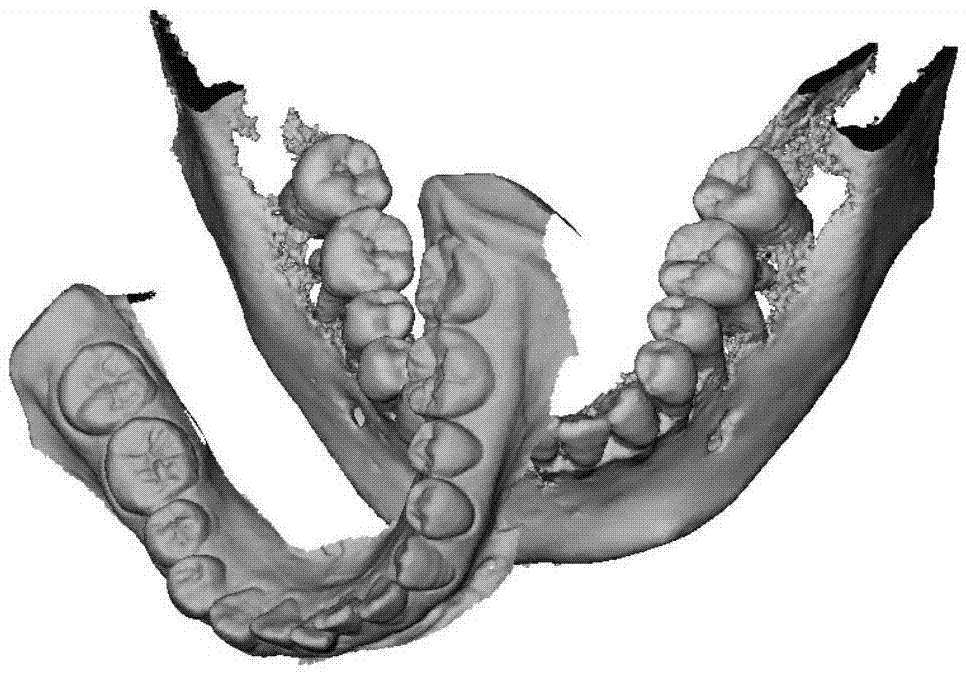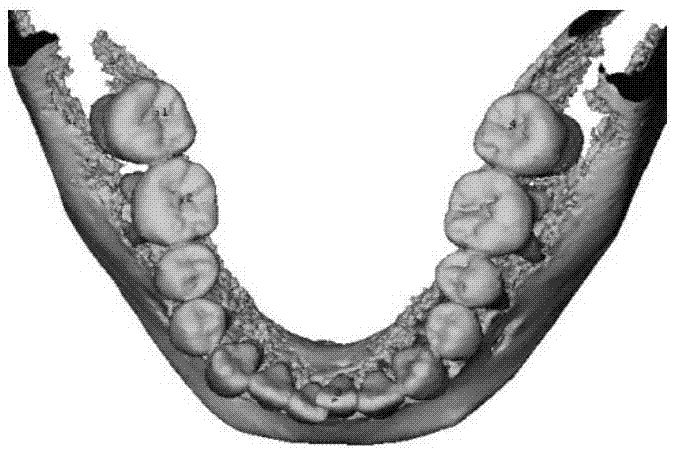Dentition model generation method based on oral cavity scanning data and CBCT (Cone Beam Computed Tomography) data
A technology for scanning data and dentition models, which is applied in the field of 3D digitization and can solve problems such as incorrect data position relationship
- Summary
- Abstract
- Description
- Claims
- Application Information
AI Technical Summary
Problems solved by technology
Method used
Image
Examples
Embodiment Construction
[0088] The present invention is described in detail below in conjunction with accompanying drawing:
[0089] A dentition model generation method based on oral scan data and CBCT data proposed by the present invention is mainly aimed at the registration and fusion of intraoral scan data and grid models created through segmentation and three-dimensional reconstruction of CBCT data. The overall flow chart is shown in Figure 12 ,include:
[0090] Such as figure 1 As shown, the oral scan data and the triangular mesh model created by the CBCT data are read, and the index data of the points and surfaces of the model, the topological relationship between the edge and the surface, the point and the edge, and the point and the surface are analyzed.
[0091] Sets the fixed and floating models for registration. The fixed model is selected as the triangular mesh model created by CBCT, and the floating model is the triangular mesh model of intraoral scanning.
[0092] Such as Figure 2...
PUM
 Login to View More
Login to View More Abstract
Description
Claims
Application Information
 Login to View More
Login to View More - R&D
- Intellectual Property
- Life Sciences
- Materials
- Tech Scout
- Unparalleled Data Quality
- Higher Quality Content
- 60% Fewer Hallucinations
Browse by: Latest US Patents, China's latest patents, Technical Efficacy Thesaurus, Application Domain, Technology Topic, Popular Technical Reports.
© 2025 PatSnap. All rights reserved.Legal|Privacy policy|Modern Slavery Act Transparency Statement|Sitemap|About US| Contact US: help@patsnap.com



